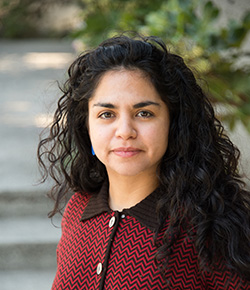On her path to graduate school and the Public Humanities program
I majored in American Studies as an undergraduate student at the University of California, Santa Cruz, and took a few classes with a Ho-Chunk scholar, Amy Lonetree, who was interested in the ways that native Americans have been portrayed in museums. Before that class, I’d never thought of museums exhibitions as having biases and I became really interested in using exhibitions as a form for education.
After graduating, I knew I wanted to work in the museum field, but I wasn’t exactly sure what I wanted to do. I applied to several museum studies and museum education programs, but Brown’s Public Humanities program was the perfect fit. It offered a lot of opportunities over two years to try out different methods and take on different roles, especially through projects and practicum experiences. We had license to try and fail with real exhibitions and programs.
I also really appreciated working with people who had a variety of interests. There were people in my cohort who had worked in science museums, children’s museums and as public artists. Learning about the ways that different institutions and disciplines approach their work has been really valuable for me.
On her current work

Last year, I curated an installation about Black Power for our permanent California History gallery. The installation traces the origins and development of African American activism in Oakland and examines histories of police brutality and economic disenfranchisement. We also worked with local non-profit organizations to develop action cards that encourage visitors to take steps that are in line with Black Power. The cards name local businesses and organizations that visitors can support.
I’m currently curating OMCA’s annual Days of the Dead exhibition for 2019. This is the 20th-anniversary for this exhibition and I’m really excited to be working on it. The exhibition will explore the history of the Chicano movement and the Chicano artists and activists who first incorporated indigenous traditions from Southern Mexico into Days of the Dead celebrations in the United States. Before this shift, people on this side of the border rarely celebrated Days of the Dead.
Museum work can be challenging. Most museums are non-profit organizations with public service at their core, but the reality is that we have to bring in visitors. I’m always looking for ways to curate exhibits that will be relevant to our local communities but will also invite people to have uncomfortable experiences. Museums are safe places for people to feel uncomfortable, and that can be really transformative.
On what she misses about Providence
I miss the seasons and the different textures that you rarely see in California.